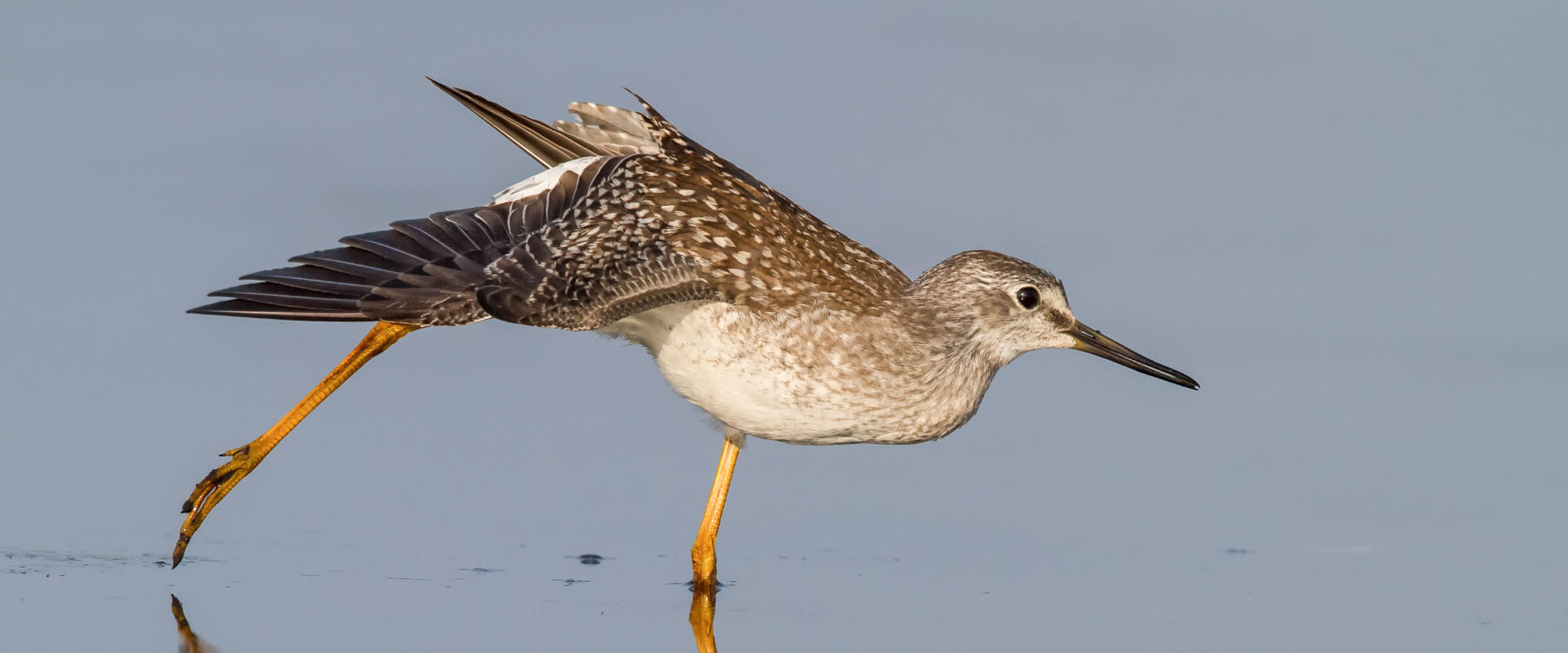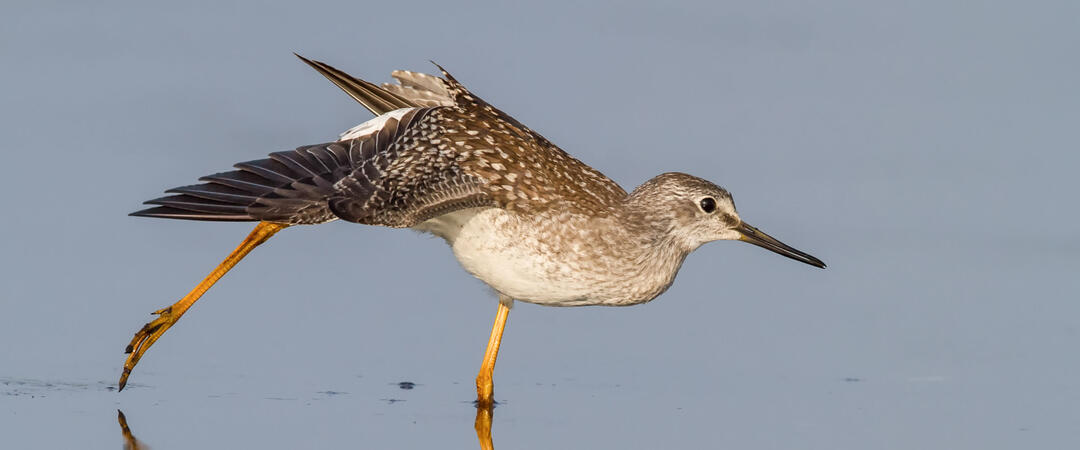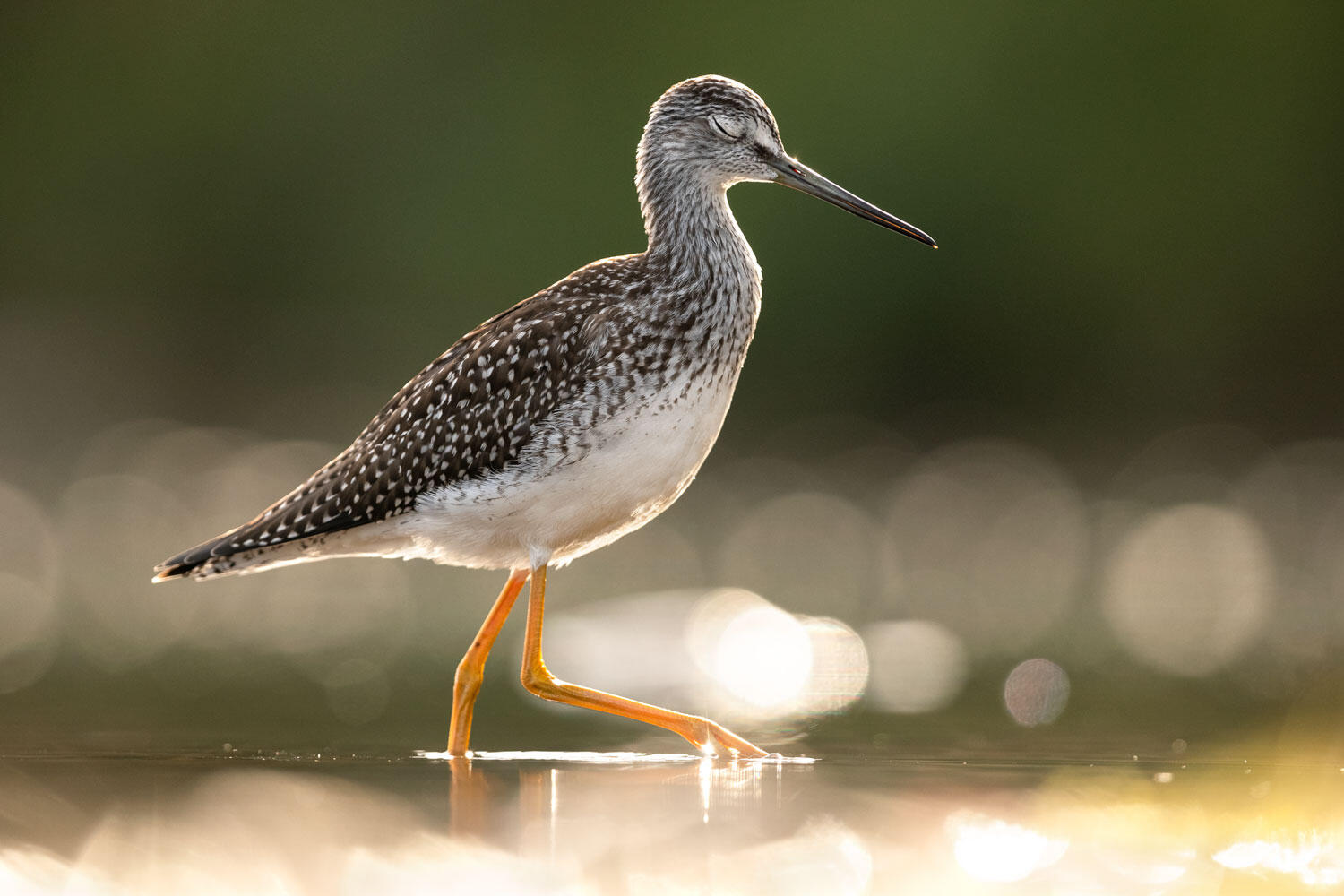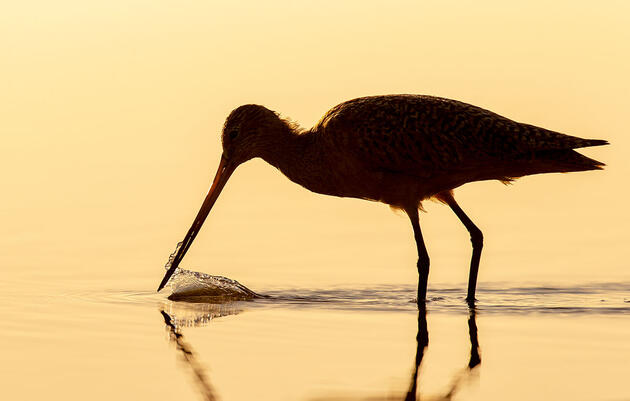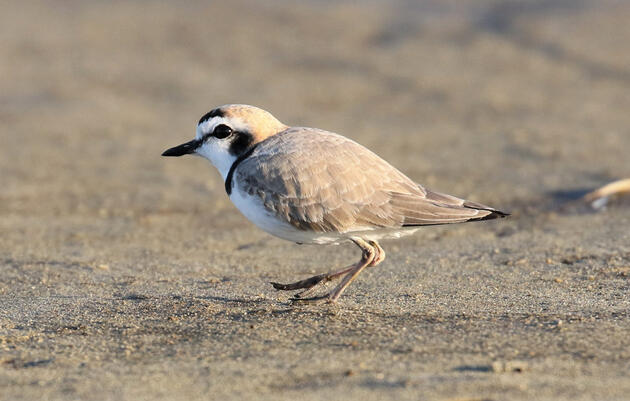Great Salt Lake has tremendous importance as habitat for shorebirds. Forty-two species of shorebirds have been confirmed there. On May 21, 2021, Utah Governor Cox declared 2021 as the “Year of the Shorebird” in Utah. In celebration of Year of the Shorebird, each month for the rest of the year, longtime shorebird enthusiasts Ella Sorensen and Max Malmquist will highlight some of the lesser-known shorebird species that typically do not receive as much attention as the boldly patterned American Avocets and Black-necked Stilts.
Most shorebirds are considered drab, feathered in somber colors of varying gray, white, black, and brown. When beauty is flamboyant, with bright and flashy colors, human appreciation follows readily. But sometimes beauty is subtle, awareness seeping slowly in, revealing an elegance of patterns and shades to those who linger attentively, long enough to perceive it.
Greater and Lesser Yellowlegs
Yellowlegs are birds aptly named by description. The brilliant yellow of their long stilt-like legs ranks supreme in the world of shorebird legs. When standing alert on those long colorful legs, with a long neck extended and an upright stance, yellowlegs appear stately and regal.
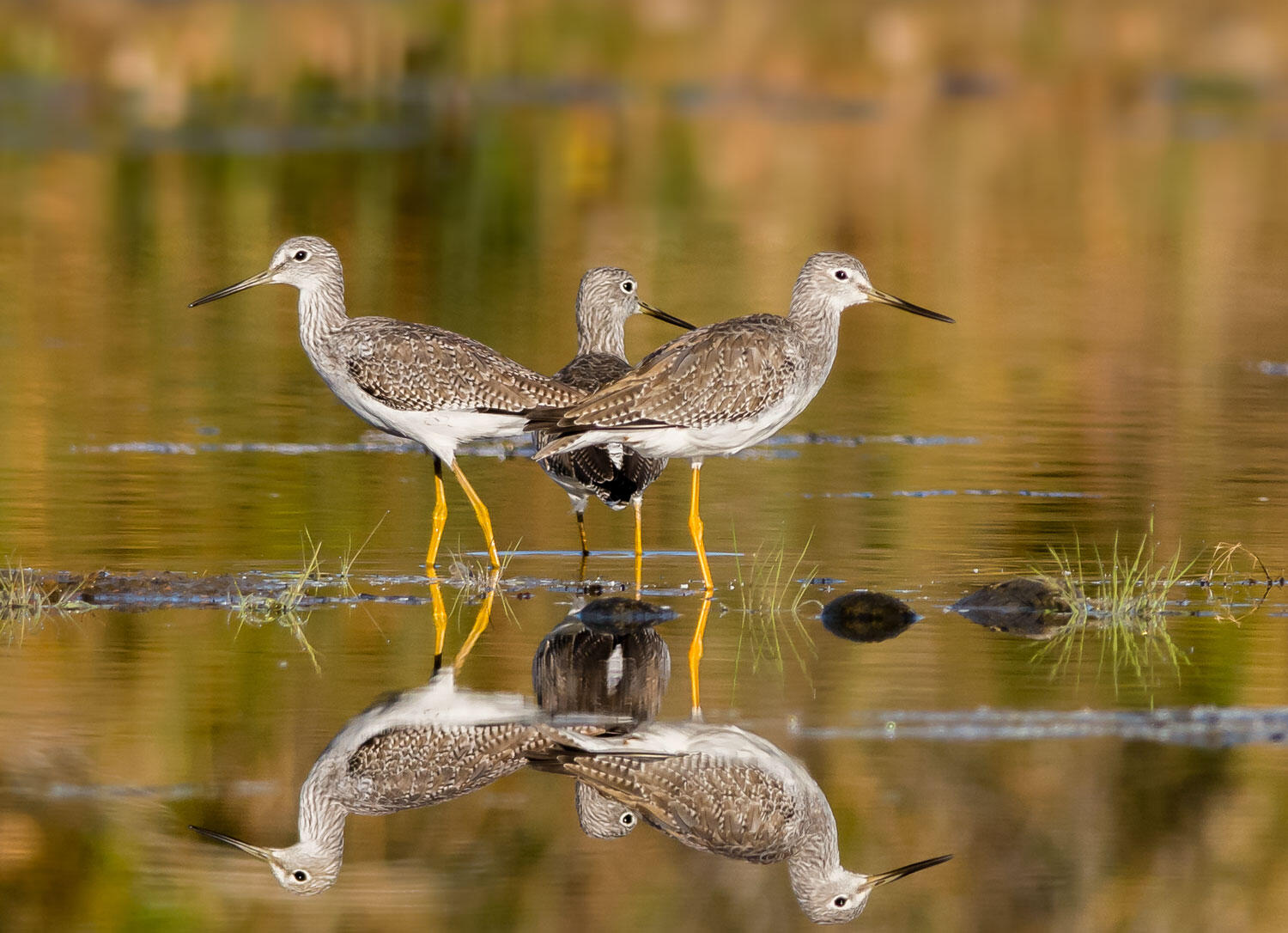
But, Greater and Lesser Yellowlegs??? Perhaps this part of the name should be rethought. Lesser denotes not as important, inferior, secondary, slighter, second rate. Calling one species greater and one lesser is inappropriate. Obviously, these names are based on Greater Yellowlegs being larger than the daintier Lesser Yellowlegs, but size alone does not elevate one above the other in importance. Greater and Lesser Yellowlegs are distinct species equal in intrinsic worth. In fact, taxonomists even debate how closely related these two species actually are. They should each have individualized names, not be named in comparison to each other, especially if one name connotes inferiority.
Habitat and Occurrence
Greater and Lesser Yellowlegs forage in shallow open water (often with low vegetation), wet meadows, flooded pastures, and agricultural fields. Mostly they forage in ankle-deep water, but if prey is present, they will wade deeper until the water touches their bellies. Wetlands with fresher water are preferred over more saline habitats.

Greater and Lesser Yellowlegs can be found in the wetlands around Great Salt Lake almost all year. Winter records for Greater are more numerous than for Lesser, but both are increasing in numbers, possibly due to climate change and the shortening periods of ice cover in the wetlands. Only for a few weeks from late May to mid-June are records lacking. Then suddenly, with the reliability of the seasons, yellowlegs return. A vanguard consisting of a few birds appears around June 15. These individuals are likely failed nesters. The brief period between spring and fall migration elicits the quip: sometimes it is hard to tell if they are coming or going.
The breeding ranges of the two yellowlegs overlap. Greater Yellowlegs nests in a band across central Canada and southern Alaska. Lesser’s nesting range extends farther north and does not go as far east as Greater’s. Migration spans widely across the United States. Wintering grounds include southern United States and South America, with Greater occurring farther north.
Behavior
Yellowlegs are predominately visual hunters, more active than most shorebirds. On their quest for prey, they restlessly race about searching in shallow water with rapid, jerky motions, gleaning invertebrates at or below the water surface. On Great Salt Lake, they are often recorded in small, loosely structured flocks of one to five birds almost always fewer than 50 individuals. Flock size is variable and up to several hundred birds have been reported. Flocks consist of just Greater or Lesser but more often a mix of both species.

Yellowlegs are among the most widespread shorebirds. And yet ecologically they are poorly understood.
As explained in Cornell’s Birds of the World Species Accounts:
“Although the Greater Yellowlegs is common and widespread, its low densities and tendency to breed in inhospitable, mosquito-ridden muskegs make it one of the least-studied shorebirds on the continent.”
“The Greater and Lesser yellowlegs are among the most poorly known shorebirds in North America.”
Distribution at Great Salt Lake
How does Great Salt Lake rank as a hotspot for yellowlegs migration? Yellowlegs are widespread migrants occurring in small numbers across the continent. Great Salt Lake is a shorebird oasis in a semidesert landscape with millions of shorebirds annually passing through the vast expanses of wetlands. These include a wide band of playas that fringe the open water and emergent wetlands.
Today, eBird is providing a fantastic tool for tracking the movements of birds. Authors of ornithological papers often use eBird data and the results are accepted as fact. But understanding context is critical to credible and reliable interpretation.
Observers knowledgeable in shorebird identification who use eBird to record their observations are sparse in Utah, far fewer than in many other areas where shorebirds migrate. Additionally, much of the vast area utilized by shorebirds on Great Salt Lake is inaccessible. At Gillmor Sanctuary, when water management provides yellowlegs with habitat, both species occur regularly, even occurring in flocks of several hundred into November.
Occurrence based on eBird often reflects the occurrence of birders rather than a reliable representation of the abundance of the birds themselves. Yellowlegs are found widely across Great Salt Lake. If the abundance on the regularly monitored Gillmor Sanctuary reflects the abundance through Great Salt Lake wetlands, then Great Salt Lake has a far greater ranking in importance for yellowlegs migration than the eBird data and other literature suggest.
Identification
Shorebird bills vary greatly in length from short to very long. The shape can be upturned, straight, or decurved. An array of foraging techniques based on the length and shape of the bill include picking, probing, and sweeping. Yellowlegs have bills of medium length. Lesser has a thinner, straight black bill. The Greater has a thicker, longer bill often appearing slightly upturned with gray at the base in most seasons.
The similar appearance of Greater and Lesser Yellowlegs complicates the evaluation of these two species. Many reliable records exist for both, as they are easily separated by skilled observers, but they are often lumped together or misidentified by those with less experience.
When humans peer into the natural world, the image we see is not totally accurate. Human perception honed by evolution protects our senses from overload. Only parts of the whole are detected. Much of what is present is not observed.
A birder on a field trip with Kenn Kaufman, one of the world’s most accomplished and experienced bird experts, had the following epiphany:
“When I observe the field marks that identify a bird, I check it off, I am finished, and then it’s off to the next bird. When Kenn identifies a bird, it is not the end but the beginning, as he continues to observe, compelled to absorb every fine detail leading to a close and intimate familiarity of the entirety of the bird.”
Yellowlegs appearance is more than bill shape and size and the color of their legs. Each individual feather of the back and upper wings is drab but displays unique and exquisite multicolored intricate patterns of gray, black, and brown that change as the feathers wear, as the bird matures, and with the changing of the seasons. The underparts follow a predicable altering through the seasons as dark splotched, barred, and streaked feathers of courtship fall into the air and water to be replaced by feathers of whiter or finer markings.
We can influence our perception by paying attention. The reward is a cognizance of the subtle beauty of shorebirds.
We would like to thank Ann Neville, Marcelle Shoop, John Neill, and Jennifer Speers for reviewing and making helpful comments.

